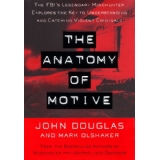I'm back with another exciting installment of a series based on The Anatomy of Motive by John Douglas and Mark Olshaker. I'm using the information to create believable antagonists. Today's post may also curl your toes or turn your stomach, so hang onto something.
Douglas says, "After interviewing a large number of serial predatory criminals, we were able to compile what we called a Sexual Homicide Motivational Model, organized according to the influences, both environmental and emotional, that seemed to determine the developmental course these men took throughout their lives and criminal careers: the factors that commonly contributed toward a motive to commit violent acts."
You can't get away from the "ick" factor when delving into the minds of depraved individuals, but if you want to create a great antagonist, you need to know what makes him tick. It seems that fantasy is the key.
 (This fantasy photo courtesy of freedigitalphotos.net. This is not the fantasy of most violent offenders, just so you know.)
(This fantasy photo courtesy of freedigitalphotos.net. This is not the fantasy of most violent offenders, just so you know.)
Douglas says that 50 percent of the criminals he interviewed had their first rape fantasy between the ages of twelve and fourteen. That's not a typo, it really says between twelve and fourteen. He goes on to say that not every boy who fantasizes about rape will turn into a rapist or murderer. It is entirely possible they grow up to be law-abiding citizens with proper impulse controls. But adults who began fantasizing about rape at an early age, combined with the homicidal triad (see earlier posts), impulse control issues, and a need for dominating those around them can easily escalate into a violent offender.
The fantasy of your violent antagonist need not be sexual. Some offenders fantasized about overcoming the problems in their lives, the pain and failure that came as a result of their superiority and inadequacy (see earlier posts). This fantasy involves being successful and getting revenge on the people who hurt him, disrespected him, or held him back from his true potential. Sometimes these fantasies include humiliation, debasement, or physical harm that doesn't lead to death. Other times, torture and death is the only thing that will satisfy the offender.
*Alert - this next bit is downright gross! Skip this paragraph if you need to.* Douglas says that "79 percent of the men in our study reported what they described as compulsive masturbation, 72 percent said they were active Peeping Toms (or voyeurs), and 81 percent described active and regular involvement with pornography." Cause and effect can't be proven with pornography, but the statistic is what it is. Bad guys like porn. But even if they didn't have access to it, they'd still be violent offenders. Fetishism is another way offenders act out their obsessions. The Diagnostic and Statistical Manual of Mental Disorders (DSM-IV) defines fetishism as involving, "the arousal of fantasies, sexual urges, or other behaviors from nonliving or nonhuman objects." Womens underwear is a classic example of a fetish. 72% of the men interviewed by Douglas admitted to having a preoccupation with some fetish during their formative years.
I feel the need to wash my hands now. But back to the point. "What is important to keep in mind in our examination of criminal motivation is the emphasis, preoccupation, and overall pattern of the sexual thinking or behavior." If it controls the offenders life, it's important to his profile because it will define how he handles his stressors. Use this when creating your antagonist. What are his fantasies? Are they merely for dominance over others, or are they sexual? Does he have control over them, or do they rule his life? Your antagonist will most likely have a background full of the distasteful stuff I put in the alert paragraph, but they don't have to come out in your book. If you're writing a cozy, you definitely want to keep that bit as pure reference for yourself. But it will be present in his background, dictating his actions, his thoughts, and his motivations. Don't skip this background just because it's distasteful. Unless it doesn't fit, of course. If your antagonist is a female, her fantasies will be completely different from those discussed in this post. But she will have them.
I need to go hug my kids now. That was a rough one. Dare I ask for comments or questions?
-Sonja

 (photo courtesy of freedigitalphotos.net)
(photo courtesy of freedigitalphotos.net) (Photo courtesy of freedigitalphotos.net)
(Photo courtesy of freedigitalphotos.net)
 (This BIC photo courtesy of freedigitalphoto.net)
(This BIC photo courtesy of freedigitalphoto.net)





